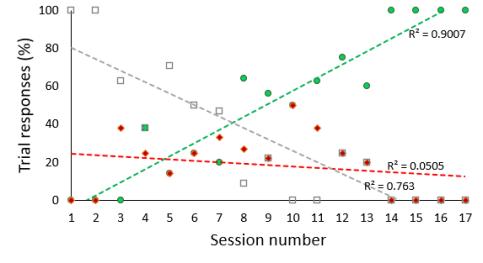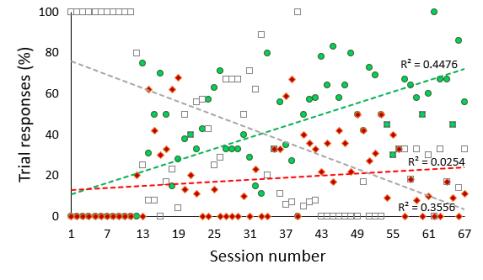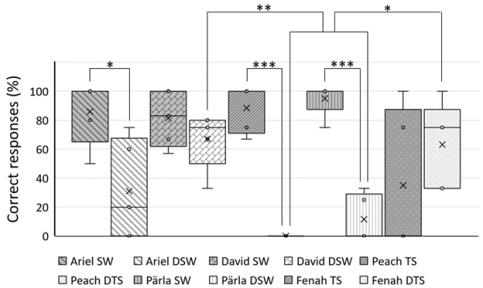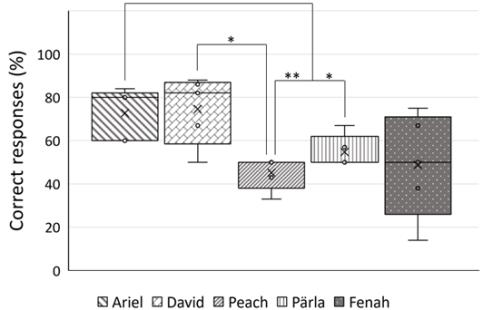Results

Call-over training
All three dolphins trained with a playback of their own signature whistle managed to learn their new call-over signal, whereas only two out of the three trained with a playback of a "trivial" sound did.
The dolphin from the "trivial" sound group that did not succeed (Lyra) was given in total 67 call-over training sessions before her training was ended due to a percieved lack in motivation.
No significant difference was found between the dolphins trained with signature whistles and the dolphins trained with "trivial" sounds, with regards to the number of sessions they needed to learn their new call-over signal.

The number of training sessions needed for each dolphin to learn their new call-over training were as follows:
Signature whistle group:
- Ariel: 45 sessions
- David: 24 sessions
- Pärla: 17 Sessions
"Trivial" sound group:
- Peach: 20 sessions
- Fenah: 38 sessions
- (Lyra: 67 sessions)
A call-over training session with Peach where she responds correctly during all trials!

Discrimination sessions
In the discrimination sessions, both the trained call-over signals and other discrimination sounds (other dolphins' signature whistles or other "trivial" sounds) were played. The dolphins were expected to leave the target and swim towards the Whistle caller speaker if their assigned call-over signal was played, but stay by the target if a discrimination sound was played.
- Ariel, Peach and Pärla responded correctly significantly more often to their assigned call-over signal than to discrimination sounds.
- David and Fenah responded correctly to discrimination sounds significantly more often than both Peach and Pärla.

Including both correct responses to their assigned call-over signal and discrimination sounds:
- Ariel responded correctly significantly more often than both Peach and Pärla
- David responded correctly significantly more ofthen than Peach
David had the highest percentage of correct responses out of all of the five dolphins taking part in the discrimination sessions. Looking at the total percentage of correct responses from the five discrimination sessions, all three dolphins (David, Ariel and Pärla) trained with a playback of their signature whistle, performed above chance level (50%) whereas the two (Fenah and Peach) trained with a playback of a "trivial" sound did not.
1. David: 75%
2. Ariel: 61%
3. Pärla: 54%
4. Fenah: 49%
5. Peach: 45%
A discrimination session with Ariel where she responds correctly in all trials!
What do dolphins ask when they don't understand a question?
"Can you be more Pacific?"
Responsible for this page:
Director of undergraduate studies Biology
Last updated:
05/14/21
